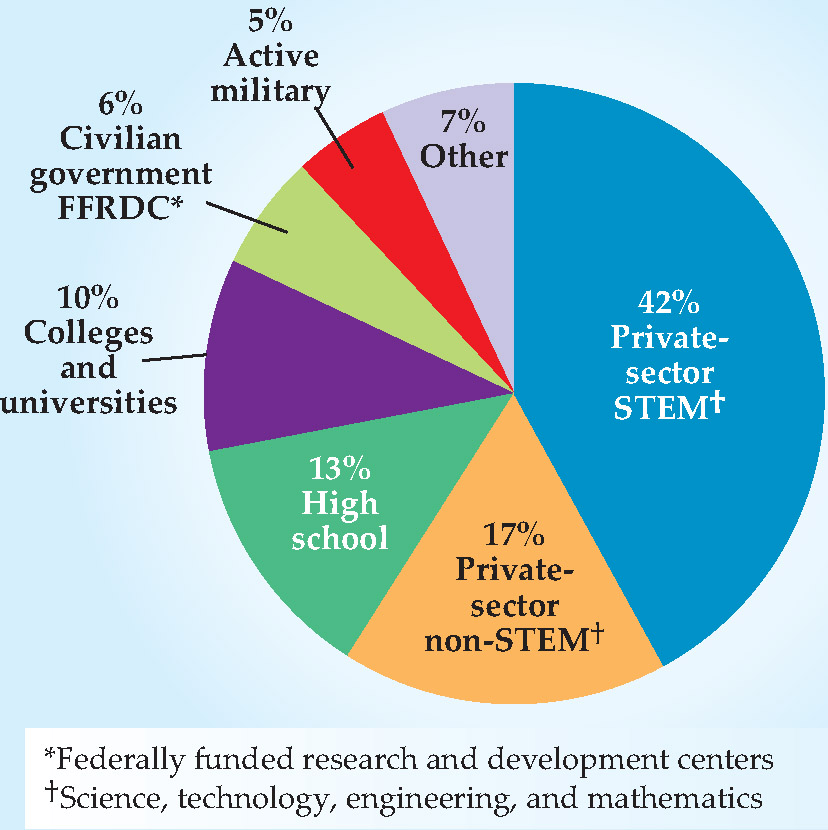Physics bachelors at work
DOI: 10.1063/1.3490495
US physics bachelor’s degree recipients from the classes of 2006 and 2007 joined the workforce and entered graduate school in proportions similar to previous years, according to a recent report by the American Institute of Physics. Those proportions were 39% and 57%, respectively, with the remaining 4% job hunting the winter after earning their degree.
Typical salaries for newly employed physics bachelors ranged from the low $20 000s to mid-$50 000s (see figure). The largest group went to work in the private sector for high-tech companies, defense contractors, utilities, and smaller companies that involved manufacturing, retail, and food. More than two-thirds of the private-sector positions were in natural sciences, technology, engineering, or mathematics (STEM) fields. Many of the higher salaries went to the 25% of degree recipients in the non-STEM category who went to work in banking or finance.

Initial employment sectors of physics bachelor’s classes of 2006 and 2007

Of the degree recipients who entered the workforce, the private-sector route was taken by 59%—by 61% of men and 54% of women. The genders split the other way for the 13% of new bachelors employed as high-school teachers: 11% of men and 17% of women.
Although high-school teachers and members of the military were among the lowest paid of all physics bachelors, they were among the most satisfied in terms of salaries and benefits. New physics bachelors working in non-STEM fields reported the lowest level of job satisfaction.
About half of the employed bachelors said they intended to enroll in graduate school within three years.
These and other data on the employment of new physics bachelor’s degree holders are available in the report Physics Bachelor’s Initial Employment, which can be downloaded free of charge at http://www.aip.org/statistics/trends/emptrends.html
More about the Authors
Toni Feder. American Center for Physics, One Physics Ellipse, College Park, Maryland 20740-3842, US . tfeder@aip.org





